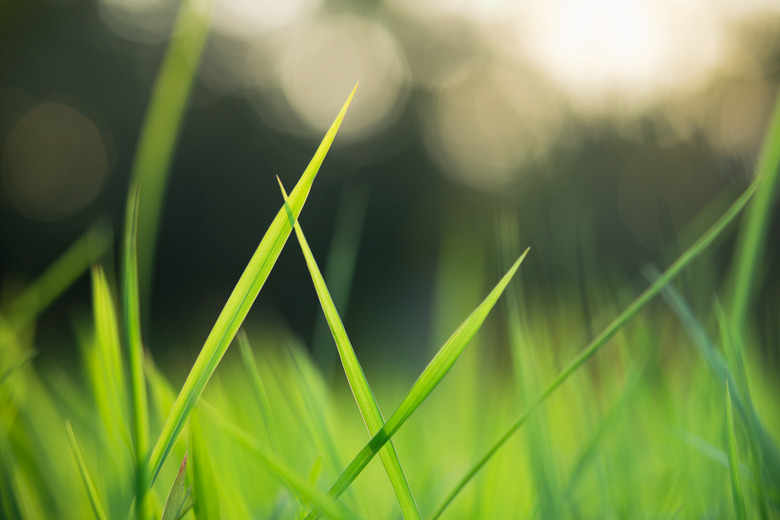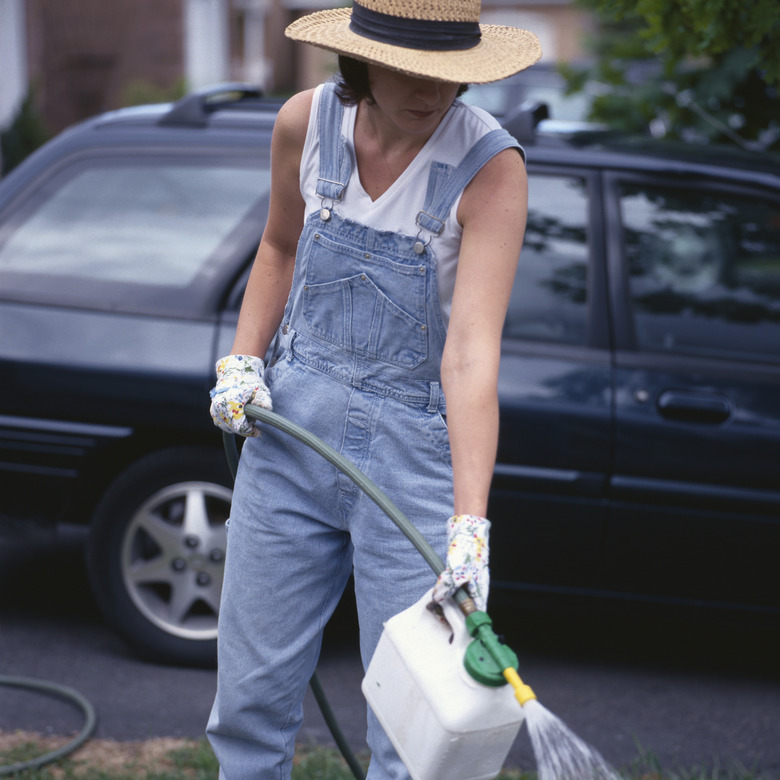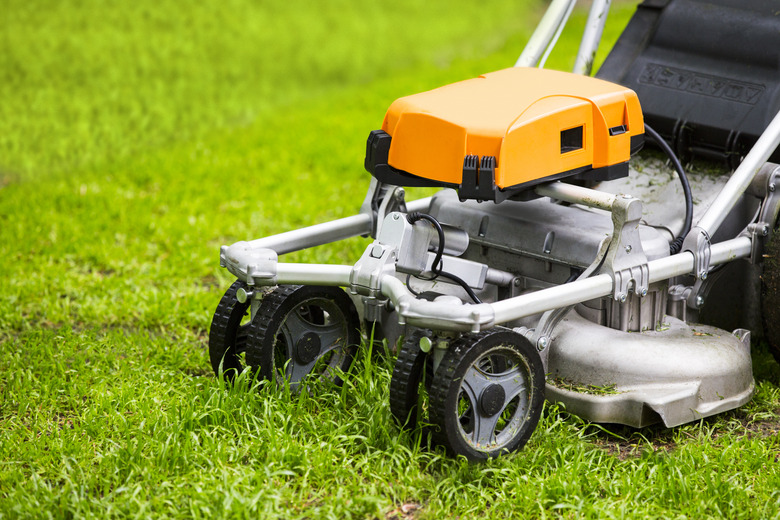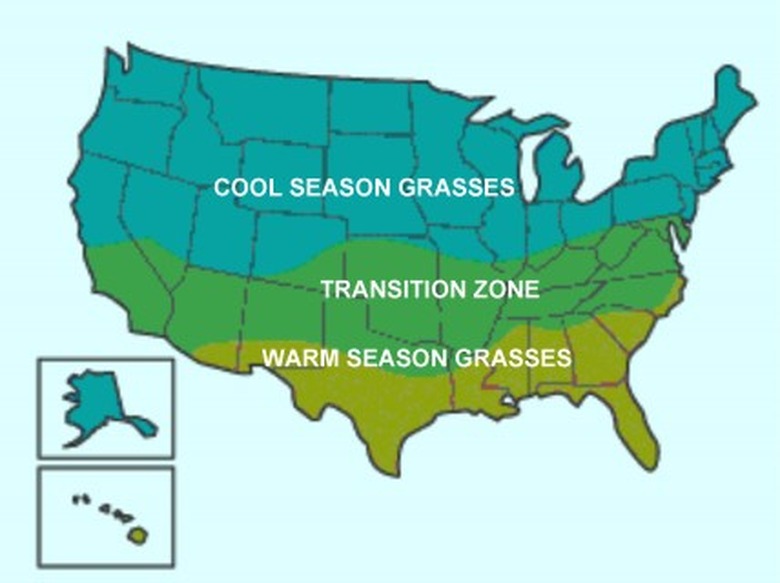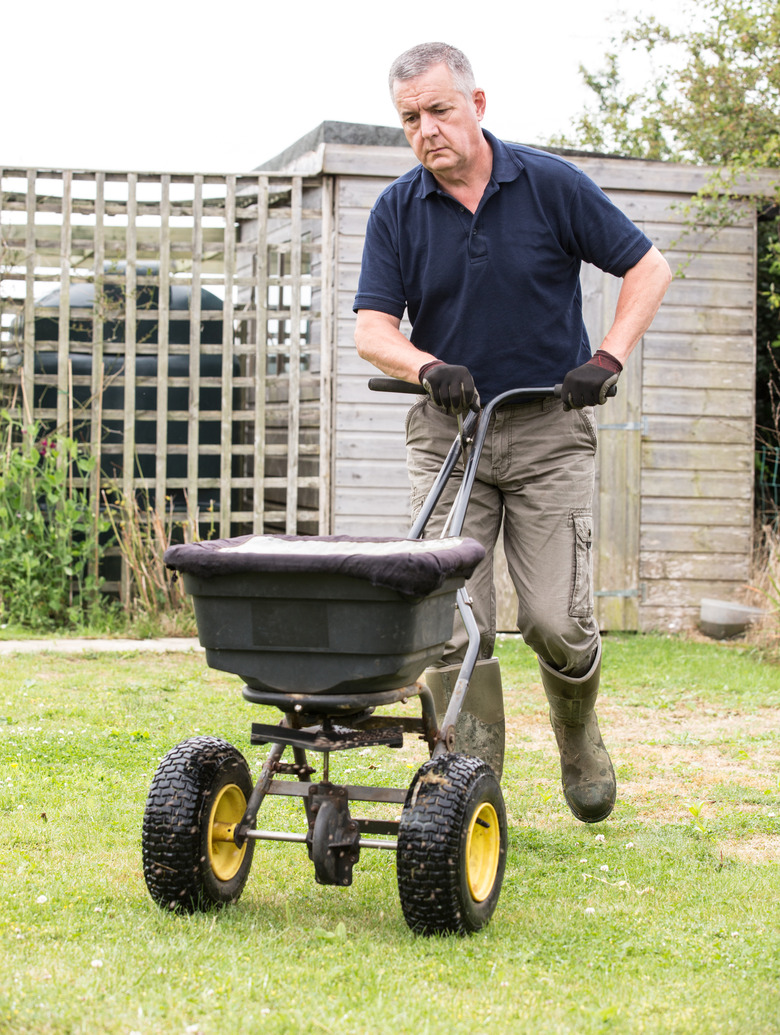How (And When) To Fertilize Your Lawn
Grass gets its nutrients from minerals and organic matter in the ground, from grass clippings— and also from the application of inorganic or organic fertilizer. Fertilizing contributes more to improving poor-quality grass and maintaining a healthy lawn than any other turf-management practice, such as aerating or dethatching. The advantages of feeding your lawn include:
- It keeps grass dense, vigorous, and a lush green.
- It helps turf recover from damage and stressors, such as drought, heat, and cold.
- It prevents crabgrass and weeds from taking over.
- It fortifies lawns against attack by disease and insects.
Types of Fertilizer
Types of Fertilizer
Grass gets the hydrogen, oxygen, and the carbon it needs to grow from water and the air, and absorbs 13 additional nutrients from the soil. The nutrients required in larger amounts than the soil may naturally supply are:
- Nitrogen, abbreviated by its chemical symbol N on fertilizer bags, contributes the most to established lawns, promoting rapid growth and a vibrant green.
- Phosphorus (P), in the form of phosphate, stimulates root development.
- Potassium (K), included in fertilizers in the form of potash, enhances stem growth drought tolerance, disease resistance, and hardiness.
These are the three main ingredients you'll find in fertilizers. Products known as "complete fertilizers"contain all three. By law, all fertilizers list their guaranteed minimum percentage nutrient analysis prominently on the package in the form of three numbers indicating N, P, and K, always in that order. For example, 28-0-3 means the fertilizer contains 28% nitrogen, no phosphorus, and 3% potassium. The bag will also list the type(s) of nitrogen in the fertilizer, as well as the nitrogen source, which determines if the nitrogen is quick release or slow release.
The label also lists any other nutrients contained in the fertilizer, along with a number detailing the percentage, by weight, of that nutrient compared to the total contents in the bag. When feeding turf grasses, stick to lawn fertilizers, which are designed to provide the nutrients that mature lawns need, and avoid general-purpose garden fertilizers (such as 12-12-12). Finally, the bag label also describes how many square feet the product covers and provides information on the proper setting to calibrate various types of spreaders to ensure that you apply the correct amount of fertilizer. You'll need to know the size of your lawn to ensure you apply the correct amount.
Fertilizer comes in granular form, as well as in liquid form sold in an application container that screws onto your garden hose. The granules are available in time-release, quick-release, and slow-release formulations that give you more control over how you feed your lawn. The two basic types of nitrogen sources in lawn fertilizer determine whether a product is slow-release or quick-release.
Quick-Release Fertilizer
Quick-Release Fertilizer
With this type, water-soluble nitrogen becomes available when irrigation or rainfall dissolves it, feeding plants immediately and stimulating quick shoot growth and greening. It rapidly deteriorates out of the soil, however, lasting only two to four weeks. If over-applied, quick-release nitrogen can burn the grass.
Slow-Release Fertilizer
Slow-Release Fertilizer
Slow-release nitrogen is preferred in sandy soils and results in more uniform growth and is less likely to burn the grass. Because it lasts six to eight weeks or longer, you won't have to apply it as frequently as quick-release nitrogen. Slow-release formulations cost more than quick-release fertilizer, and the nutrients aren't immediately available to the grass. It doesn't work well in cold temperatures, and when temperatures are hotter, slow-release fertilizer requires heavier irrigation. There are two types of slow-release fertilizers: organic, or coated slow-soluble.
- Organic fertilizers, made from organic materials, must first be broken down by microbial activity. This means that they have to be applied when the soil is moist and warm enough to promote soil organism activity
- Slowly-soluble and coated fertilizers also rely on soil moisture and temperature to release nutrients. Because some can last up to 12 months, fewer applications are needed. These products provide good greening without excessive growth, but plants may not have access to nutrients when needed.
Half of the nitrogen in a lawn fertilizer should be in one of these two slow-release forms, with the other half of the nitrogen in instant-release form. Choose fertilizer based on quality, not on bag size and price.
How a Mowing Mulcher Can Help
How a Mowing Mulcher Can Help
Leaving the grass clippings behind on the lawn when you mow allows them to break down and return valuable nutrients to the soil. In fact, this process, sometimes called grasscycling, can reduce your need for fertilizers by 25 to 50 percent.
Mulching mowers have a mechanism that cuts the clippings much smaller than a standard mower, to help them break down faster. You can also grasscycle effectively with a standard mower by setting your blade height and mowing frequently enough to trim off no more than the top third of the grass. When mulching grass clippings with a standard mower, the bag is not used and the chute is closed off so that grass clippings circulate inside the mower chamber and are re-chopped by the blade.
Which Fertilizer Should You Use?
Which Fertilizer Should You Use?
You should apply only the nutrients your lawn needs. To determine what your grass needs, have your soil tested—every year for coarse, sandy soils, and every two or three years for fine, clay-heavy soils. (You can have the soil tested by taking a sample to your local extension office.) These tests also analyze soil pH. Soils with too high or too low a pH adversely impact the grass's ability to absorb nutrients.
Select a fertilizer based on your soil test's recommendations for potassium and phosphorus. For soil with a pH below 5.5, use a fertilizer containing lime; use a fertilizer with sulfur in it if the soil pH is above 7. Note that testing of nitrogen levels is only done infrequently; you'll apply that nutrient to promote the growth and the level of greenness you prefer. Typical recommendations for nitrogen are based on your grass species, but they generally fall between 1/2 to 1 pound per 1,000 square feet at each application. Read the product label, and follow its instructions to the letter.
When to Fertilize
When to Fertilize
Applying the right fertilizer at the right time helps grass accumulate and store nutrients. Fertilizing is based on the type of grass you have—warm-season or cool-season. Warm-season grass has optimum growth at temperatures between 80 and 95°F; it includes Bermuda grass, St. Augustine, carpetgrass, zoysia, and bahiagrass. Cool-season grass grows optimally between 60 and 75°F and includes Kentucky bluegrass, fine and tall fescue, annual and perennial ryegrass, and creeping bentgrass.
Fertilizing Cool-Season Grass
Fertilizing Cool-Season Grass
Different authorities have varying views on how frequently to apply fertilizer, ranging from two to four times per year or even more. Keep in mind that applying more nitrogen makes the grass grow more actively, meaning you'll have to mow more frequently. To achieve a really green lawn, you might need to apply fertilizer four to six times per year. But excessive fertilizer has environmental consequences. A lush, emerald setting around your house looks gorgeous—but may come at a cost to wildlife and health that you're not immediately aware of.
Warning
Over-application and misuse of fertilizer harms the environment. Nitrogen and phosphorus can wash over paved surfaces into nearby streams and lakes or leach into groundwater, contaminating them and impacting water quality. Phosphorus can cause dense growth of algae and weeds in lakes, leading to the death of animal life from lack of oxygen. Sandy, coarse-textured soil is especially susceptible to nitrate pollution; drinking water with nitrate contamination of more than 10 parts per million of nitrate-nitrogen can cause methemoglobinemia, the inability of infants to use oxygen.
To minimize harm to the environment:
- Test your soil, and apply only the nutrients needed. Use sparingly, and never more than 1 pound of nitrogen per 1,000 square feet per application.
- Immediately clean up any fertilizer that spills on sidewalks, roads, or driveways.
- When you water after fertilizer application, make sure the water doesn't run off into streets or lakes.
- If your lawn is compacted or has a high quantity of thatch, aerate it to promote better infiltration of water and to reduce the potential for runoff.
- Don't apply fertilizer to frozen soil.
Spring: During spring's growth spurt, apply less nitrogen, and use slow-release fertilizers to minimize excessive growth.
Summer: Apply little to no nitrogen during summer unless you water frequently or remove clippings during mowing.
Autumn: Cool-season grasses benefit most from the application of nitrogen from late summer through autumn. This promotes recovery from the hot summer months, maximizes color, and prepares the grass for winter, without spurring growth. Two to four applications are recommended. To promote density, apply 1 pound of nitrogen per 1,000 square feet of lawn each month from late August through early October; then, from early October to early December, spray with water-soluble nitrogen fertilizer every three weeks and lower the application to between 1/2 and 3/4 pound per 1,000 square feet. You may have heard of applying phosphate and potassium in the fall to "put the lawn to bed," but if your test indicates the soil contains enough of these nutrients, it isn't necessary to apply more.
Tip
- Only fertilize actively growing grass.
- Don't apply fertilizer during the winter or to frozen ground.
- For more consistent growth and color, apply fertilizer at the lowest rate possible (while still yielding a healthy lawn) and more frequently, rather than applying it less frequently but at higher rates. For example, apply 1/2 pound of nitrogen per 1,000 square feet every 21 days, rather than 1 pound every six weeks.
Fertilizing Warm-Season Grass
Fertilizing Warm-Season Grass
This type of grass typically only needs two applications per year, when the grass is actively growing, which happens between the last spring frost and the first autumn frost. This is the period when warm-season grasses can can actually take up the fertilizer.
Spring: Apply slow-release nitrogen fertilizer after the grass has greened up and has two or three mowings. This indicates that the grass is actively growing, and will usually be about six weeks after the last spring frost. Split the fertilizer between two smaller applications four weeks apart rather than applying it once heavily.
Summer: Don't fertilize healthy, established lawns. New lawns or previously neglected ones, however, will benefit from nitrogen applied in late spring and summer. Use slow-release fertilizer and space the applications at least 45 to 60 days apart.
How to Apply Fertilizer
How to Apply Fertilizer
Apply granular fertilizer when the grass is dry, then immediately water the lawn to rinse the particles off the blades. A drop spreader drops the product through an opening at the bottom of the hopper, while a broadcast spreader flings the fertilizer spread across a wide area of lawn by rotary action. Both types have a dial that lets you set the amount of fertilizer delivered through the opening. Always follow the instructions on the bag for spreader settings.
Nitrogen turns grass greener, so if you don't apply the fertilizer in a uniform way, the lawn will have streaks of different shades of green. To avoid this, work methodically, making each pass in such a way that you leave no gaps and don't excessively overlap the fertilizer distribution. Follow the application with any actions listed in the instructions on the fertilizer bag, such as watering.
Tip
- Stay off the lawn when filling the spreader with fertilizer—if it spills, it could burn the grass.
- Wait until you're moving to open the spreader gate and apply the fertilizer; otherwise, fertilizer will clump heavily in the spot where you are standing still.
- As you make sharp turns, close the spreader gate to avoid applying more fertilizer on the inside than on the outside.
- Don't apply fertilizer to bare soil or driveway; this avoids run-off into drainage systems, where chemicals can eventually get into surface and groundwater.
Warning
Weed and Feed Products
Products that contain both fertilizer and herbicides that kill weeds, aka "weed-and-feed," may seem convenient, but they contain pesticides that are harmful to children and wildlife, and which can contaminate groundwater. Studies have shown links between pesticides and such illnesses as cancer, neurological disease, and reproductive problems. Furthermore, kids' still-developing bodies, brains, and immune systems can suffer long-lasting damage from exposure to pesticides. And the problem isn't just outside. Chemicals from weed-and-feed products get tracked into homes, where kids and pets playing on the floor continue to be exposed to them. Pesticides contaminating indoor spaces last much longer indoors, where there are no soil organisms and soil organisms to break them down.
If you're dead set on using weed-and-feed products, apply them only in fall. In the autumn months, plants are moving nutrients to their roots to store up food reserves for winter, so the herbicide will kill at the root level where it is far more effective.
To minimize environmental impact, a better strategy is to apply a herbicide-only product as a spot treatment, spraying the weeds only, not the entire lawn.
